-
Car Reviews
- Car News
-
Car Comparisons
Latest comparisons
- Chasing Deals
Another premium Chinese EV for Australia? Zeekr says “yes” with the handsome 7X, arriving locally in the coming months. Should you consider it?
If you haven’t heard of Zeekr, or seen one of its nine ‘houses’, ‘stores’ and ‘pop-ups’ that this Chinese marque has so far established across Australia, odds are you will notice it soon.
If you think of Volvo as the distinctly ‘European luxury’ brand of Chinese conglomerate Geely Automotive Holdings, Zeekr is the ‘Chinese luxury’ arm—it’s not trying to pretend to be a Euro brand or borrow styling cues from its Scandinavian cousin.
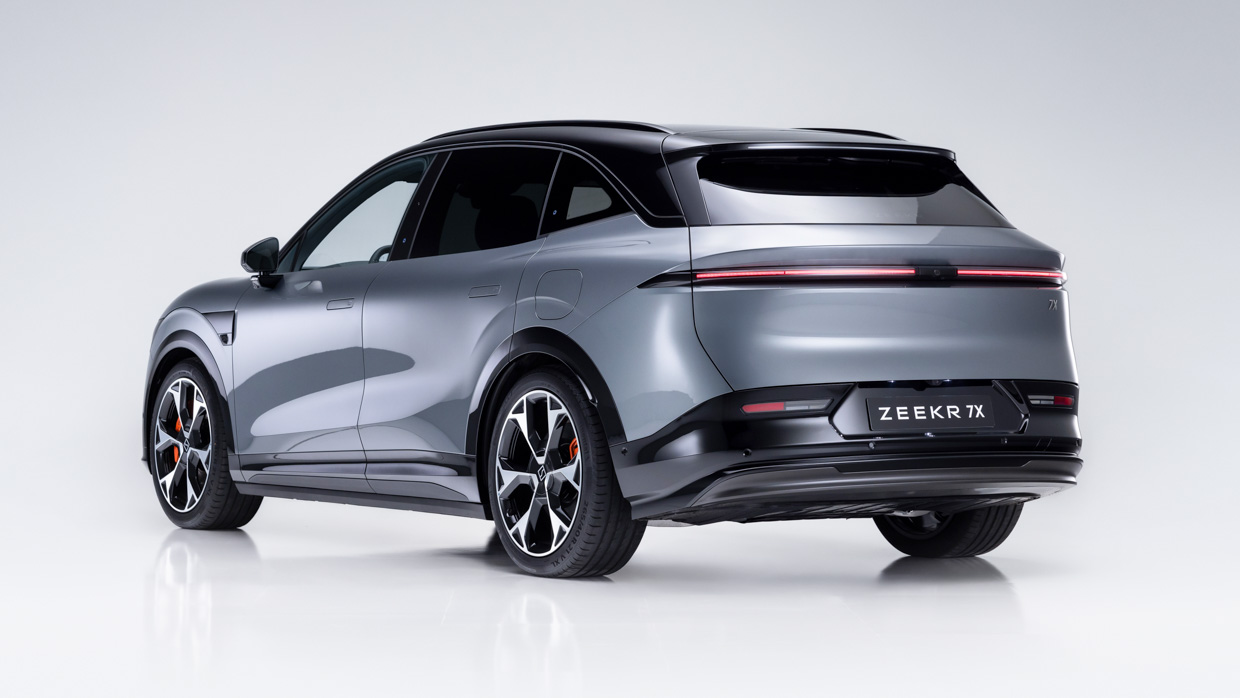
Currently, Zeekr’s Australian lineup is threadbare, consisting only of the X small luxury SUV (from $49,990) and the lush 009 minivan (from $134,900). What’s missing from the all-electric range is a midsize SUV, which is where the majority of Australian demand sits.
That problem will be solved in short order with the arrival of the Zeekr 7X – a medium-sized crossover that is marginally bigger than target number one: the Tesla Model Y (from $58,900 plus on-road costs).
But while Zeekr openly acknowledges Tesla’s dominance in the Australian market, it believes there is space for the roomier, plusher 7X to sit a little above it in the price stakes.

With promises like air suspension, nappa leather-lined interiors and sophisticated cabin tech, the 7X certainly appears to be positioned at a higher level of luxury than the Tesla.
Chasing Cars travelled to Zeekr’s home town in Hangzhou, China, to sample the 7X—and other vehicles the marque is considering adding to the local line, including the 007GT sports wagon and a rebadged version of the Lynk & Co 900 three-row SUV.
With Australian pricing expected to kick off around 15 percent higher than Tesla, should the Zeekr 7X be on your radar once it rolls into Zeekr’s retail concepts? Let’s find out.
In China (and in some European countries), the Zeekr 7X is sold with three grades.
The first is the Premium RWD, which combines a 71kWh lithium iron phosphate (LFP) battery with a 310kW/440Nm rear motor and 480km WLTP range claim.

From there, it is a step up to the Long Range RWD grade, which retains the same 310kW rear motor but utilises a 94kWh nickel manganese cobalt (NMC) battery to up WLTP range to 615km – a substantial 28 percent leap.
Finally, the Performance AWD trim keeps the 94kWh NMC battery, while adding an additional front motor to up combined outputs to 475kW/710Nm, while WLTP range falls to 543km.
Standard equipment across all 7X grades includes the following features:
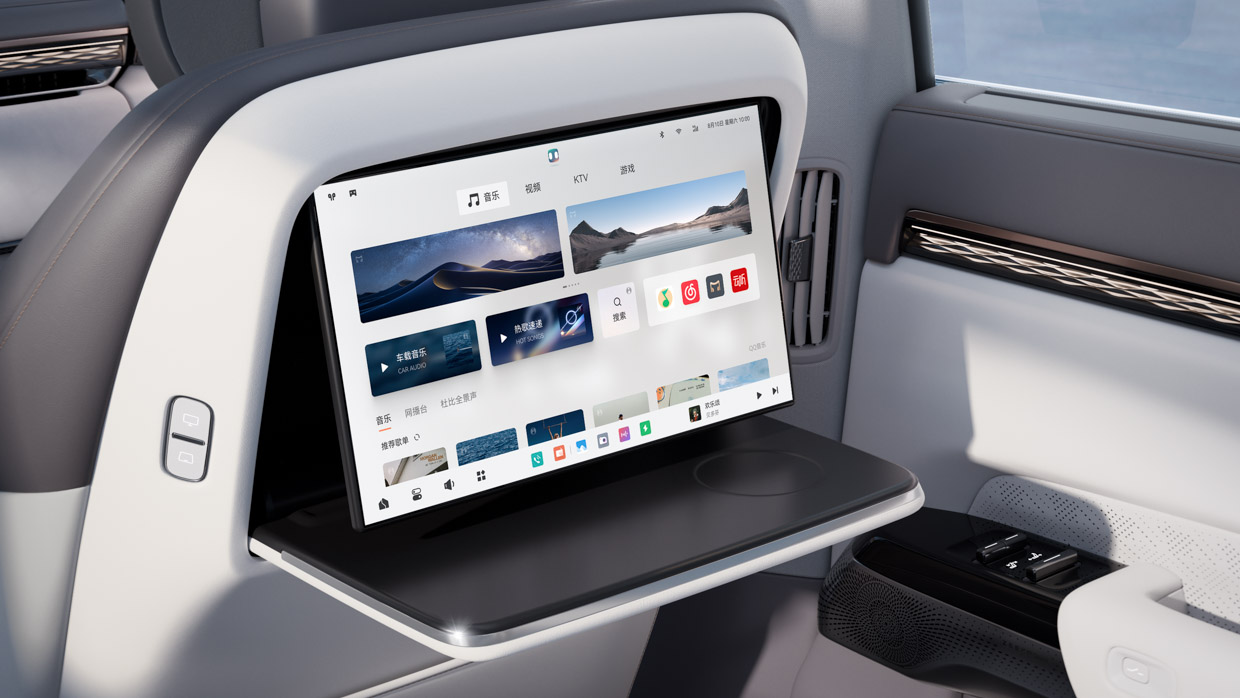
In the Chinese market, optional extras are available in various packages that include the following features:
Zeekr has not yet revealed how many trim grades will come to Australia, but there is likely to be at least one rear-wheel drive variant as well as the Performance AWD.
If specification remains similarly as generous as it does in China, pricing could possibly sit between $70,000 and $90,000 before on-road costs in Australia.
While in Hangzhou, Chasing Cars had the opportunity to test a Long Range RWD variant on a generous public road loop, as well as a Performance AWD model on a closed gymkhana that involved high-speed cornering and full-force acceleration and braking.
Both of our test vehicles utilised the 94.0kWh NMC battery, the size of the pack contributing to the 7X’s substantial mass (up to 2535kg in fully-optioned, dual-motor guise).
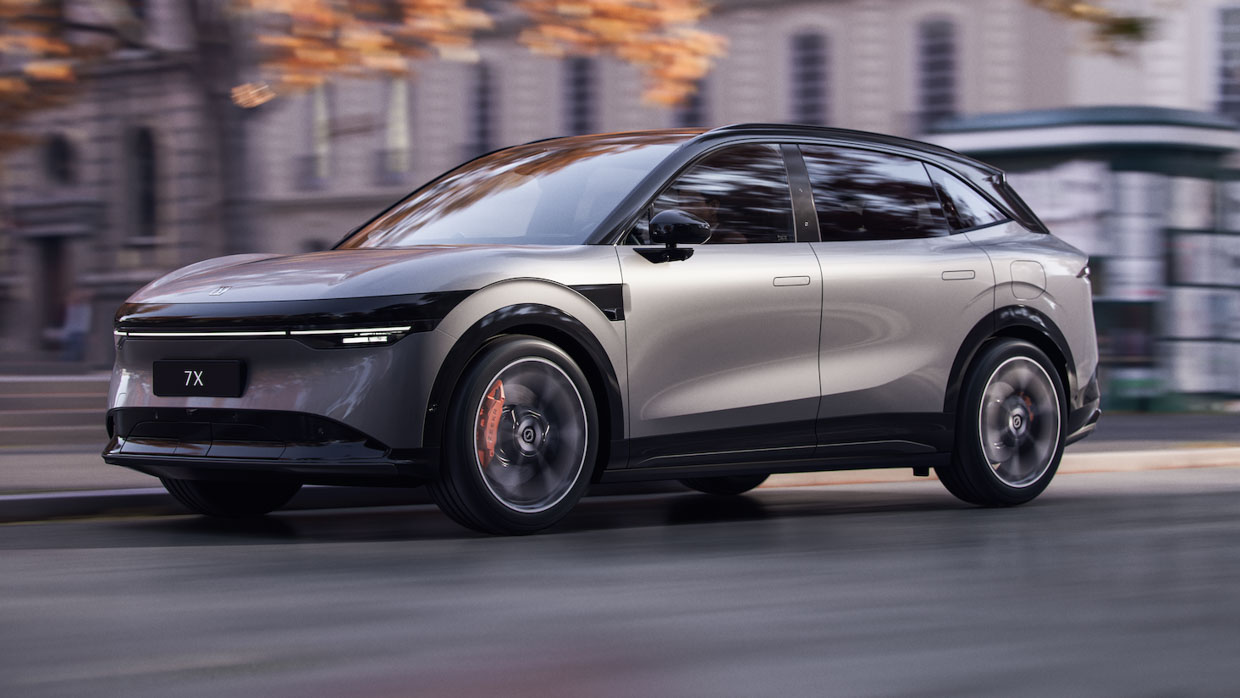
Also contributing to the weight is the Sustainable Experience Architecture (SEA) platform, which Geely asserts has very high rigidity and advantageous crashworthiness characteristics. SEA is also generating a wide range of vehicles that are arguably overweight.
That said, the vast mass of the 7X is not noticeable in everyday driving. Operated gently and gracefully, the 7X has a plush and approachable demeanour. It certainly feels massy and solid, but immediate and silken motor response keeps it from feeling sluggish.
It is only when you go looking for the weight that you will find it. The hilarious gymkhana assembled by Zeekr’s race driver team on a gravel-strewn piece of tarmac immediately revealed the 7X’s tendency to buck wildly forward under heavy braking – while there was plenty of body roll to contend with.
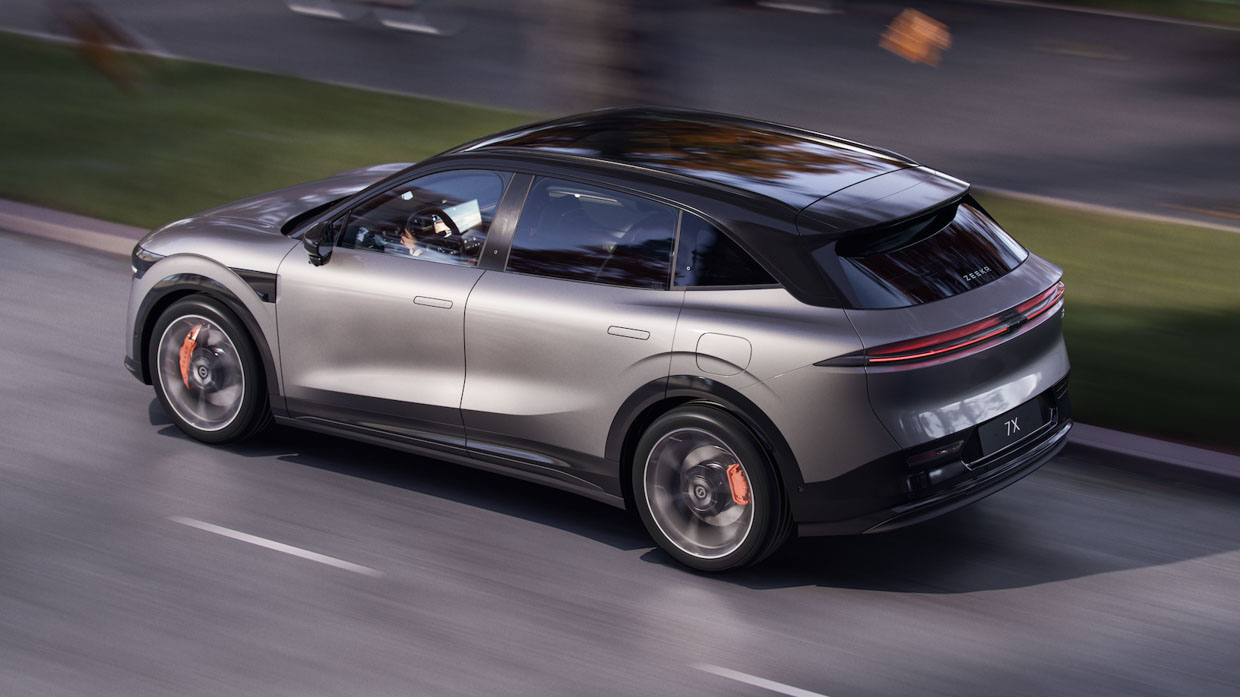
But there’s no arguing that it’s wicked fast in Performance AWD trim as the full force of 475kW/710Nm comes to bear as the throttle is depressed. Zeekr claims a 3.8 second 0-100km/h acceleration claim for the AWD, which feels accurate.
The single-motor RWD models aren’t quite as quick but they are still rapid, with claims of 5.8 sec with the LFP battery and 5.7 sec with the bigger NMC pack. As is so often the case with electric vehicles in temperate Australia, the rear-drive model is likely to be sufficient for most buyers.
Our road loop was conducted in the Long Range RWD grade, which demonstrated its affable character in suburban streets and on quicker boulevards (we only reached 80km/h, mind).
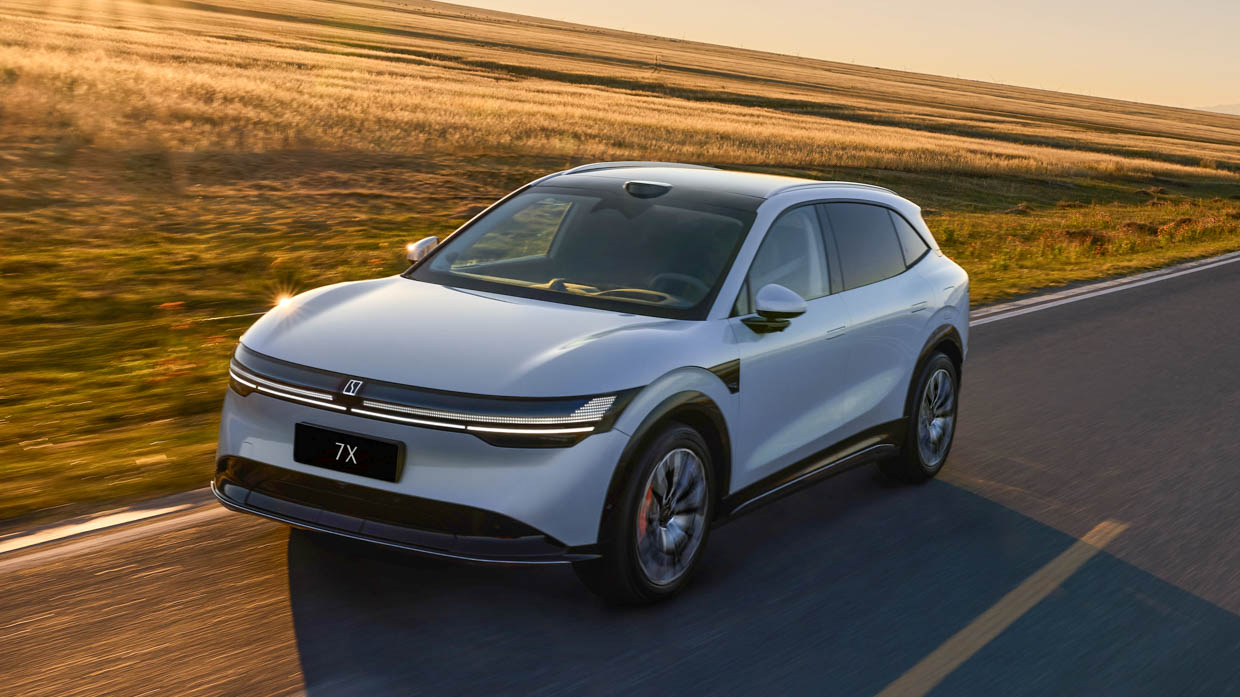
It is wafty rather than sportily damped, which will suit many buyers – particularly those with young kids napping in the car.
The vehicle we were testing was equipped with optional air suspension, and selectable drive modes allow the damping force to be altered. Encountering a seriously broken-up section of Chinese road did raise some concerns with the tuning of the ride, which becomes clumsy and uncontrolled over bigger bumps.
Still, Zeekr says that a suspension retune will be performed in Australia, and if that is seen to, we will need to evaluate ride quality on our famously fickle road surfaces.
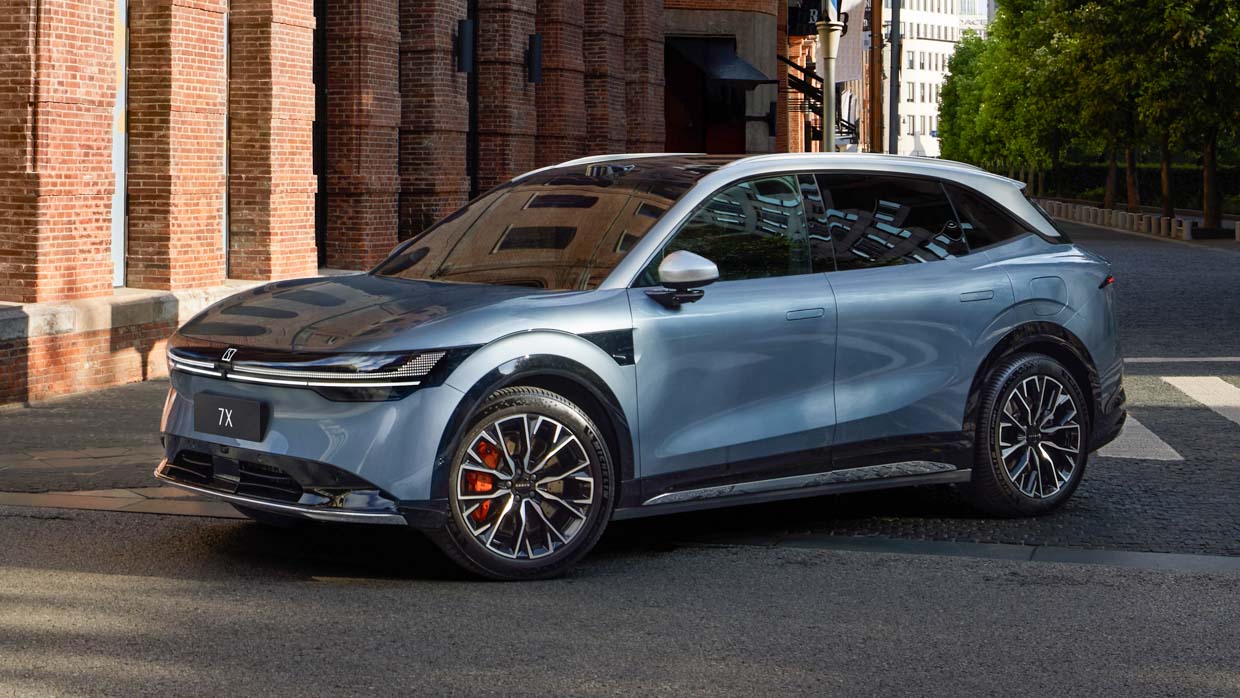
The brakes were well-calibrated, very strong on the gymkhana (with optional Akebonos), and fluid and easy on the road with three levels of regenerative force adjustment.
Refinement was really the order of the day when it came to our test drive. Substantial cabin noise insulation (probably also contributing to the weight) creates a really serene feel inside.
If you’re familiar with the Tesla Model Y’s super-minimalist cabin, the Zeekr 7X feels like a much more traditional vehicle. Zeekr’s goal: to make it feel like a normal car, where the energy source (whether combustion, hybrid or electric) is not immediately discernible.
That has worked, in part. You can certainly tell that you aren’t in a Toyota or a Hyundai (or a German luxury car), as like other Chinese premium vehicles, there is a certain generic feel to the cabin plastics in the 7X that seem to be repeated from brand to brand.
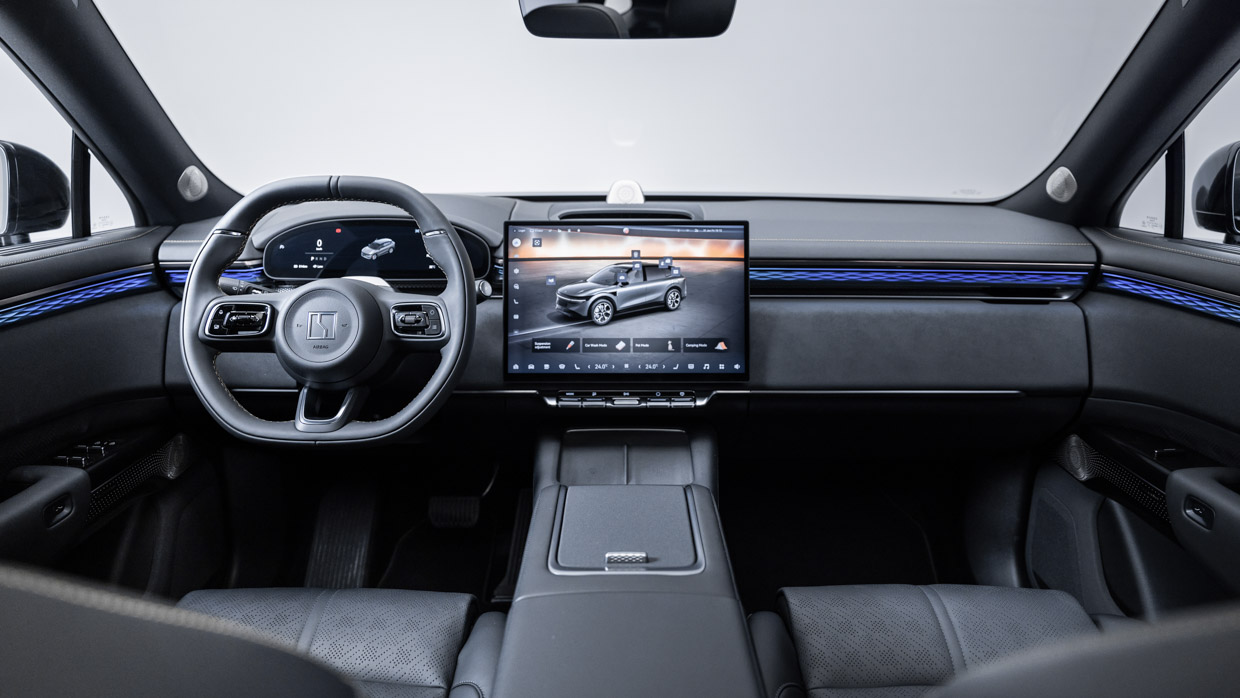
Certainly, though, the ergonomics are recognisable, with stalks, screens and buttons (hallelujah!) all to be found in expected places. We still appreciate a discrete driver’s instrument cluster showing speed, trip details and the like, and the 7X provides, with a crisp 13-inch unit beneath a binnacle.
Next to that screen sits a big and bright 16-inch unit with a modern processor behind the scenes, meaning the graphics load instantaneously.
CarPlay and Android Auto is supported, while what we could make out from the Zeekr infotainment was clear. English wasn’t available; it will be in Australia, of course.

Our test car’s white and grey nappa leather interior was attractive without being too in-your-face (though black—and much brighter—cabin colours are optional in China). The front seats are highly customisable and comfy, with ventilation, heating and massage included.
We won’t lie: it’s nice to have indicator and wiper stalks when you drive, as well as hard keys on the steering wheel to alter common functions without having to think about it. The 7X deliberately retains all of these items.
A novelty is the electric operation of the doors—a feature that is coming to Australia. Tapping the handle opens the door, while stepping on the brake closes the driver’s door (subtle buttons do the same for the others).
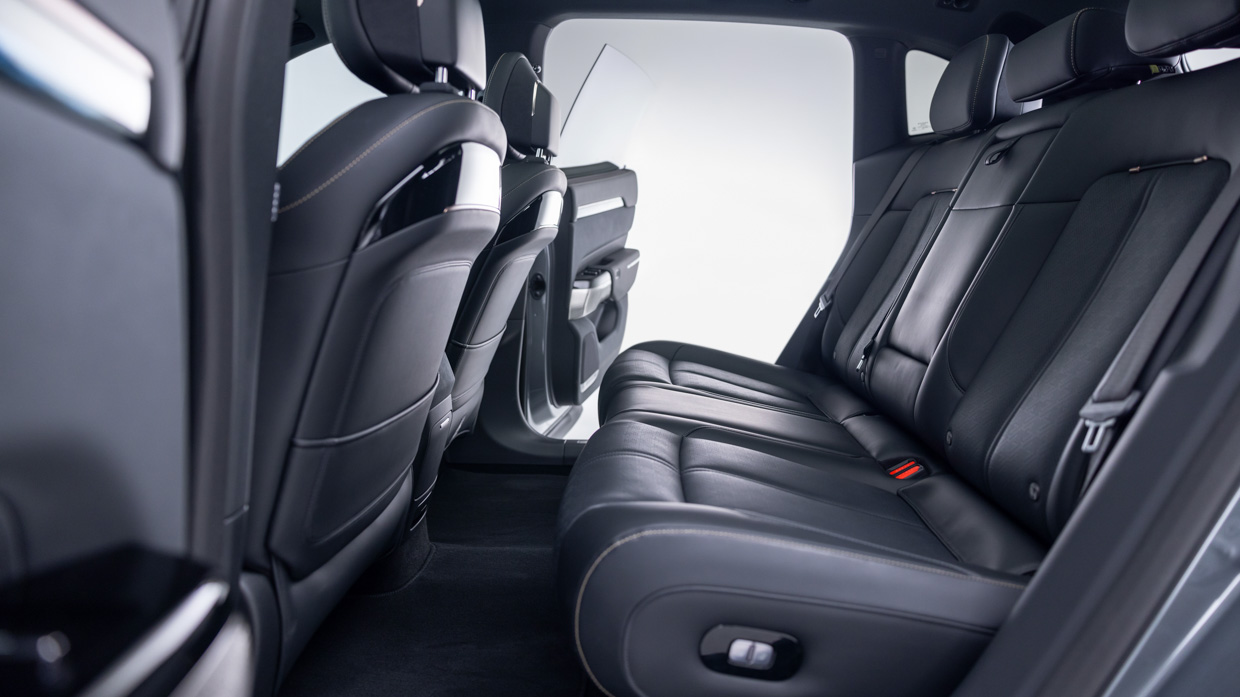
The back seats are voluminous thanks to the 7X’s near-three metre wheelbase: headroom, legroom and toe-room is all limousine like. The standard bench package is fine; in China, executive rear seats are available with huge recline, with tray tables, but this option is not likely for our market.
One complaint: there is no available third row, despite the length of the 7X probably meaning there would be space for a compact wayback seat; that said, Zeekr is considering its three-row options for Australia and is firming on a plan to rebadge the Lynk & Co 900, which does offer this layout.
Despite now being on sale in Europe, the Zeekr 7X has not yet been independently crash tested – however, the crash and safety performance of other vehicles that share the 7X’s core SEA platform has been very encouraging.
Certainly, Zeekr expects to receive a high safety rating when the 7X is eventually crashed by a Western testing body – likely Euro NCAP – thanks to the SUV’s so-called ‘Dome Armour’ construction.
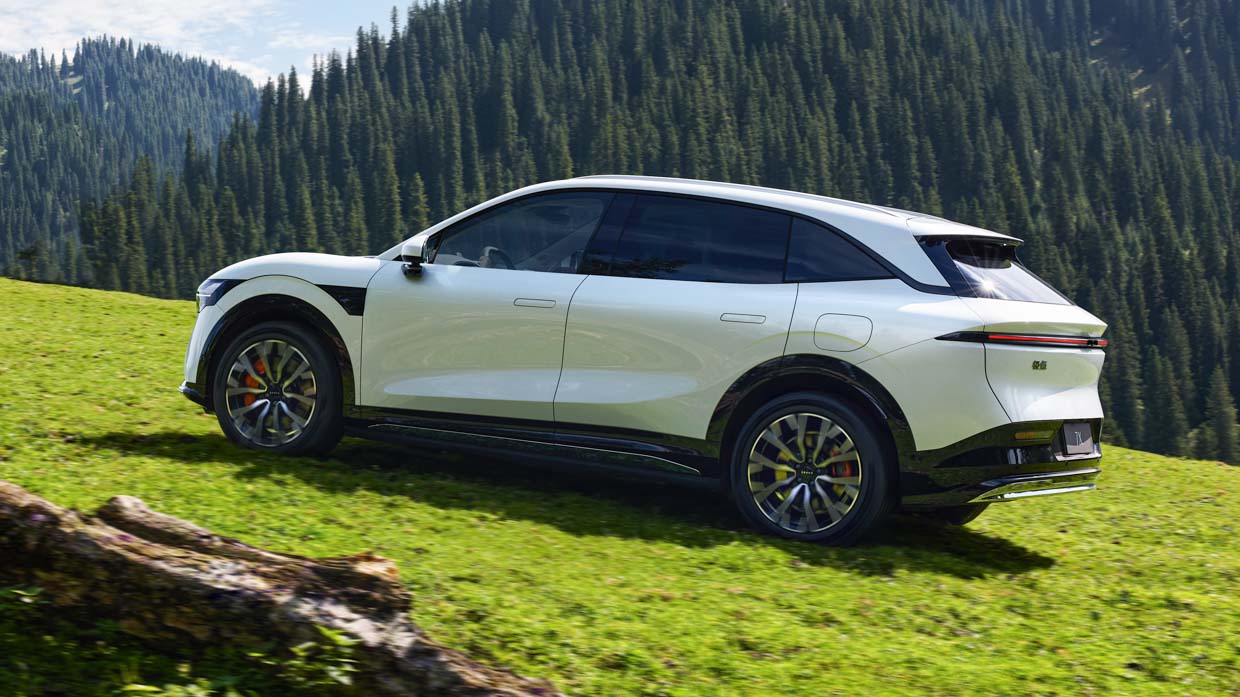
In China, the 7X is equipped with a vast array of hardware sensors and multiple cameras to inform the standard adaptive safety suite, all powered by an Nvidia Orin-X2 chipset. However, the distinct roof-mounted lidar pod is unlikely to be seen on Aussie cars, because self-driving laws are perceived to be a long way off.
The rest of the sensors will probably be retained, however, to provide expected systems like autonomous emergency braking, strong adaptive cruise control and lane keep-assist, blind spot monitoring, traffic sign recognition, and rear cross-traffic alert.
We didn’t feel the need to turn off the lane-keep on our road drive; it seemed well-tuned. But assessment of the sophistication of the 7X’s safety tech will need to wait for an Australian drive.
Because the 7X is sold in Europe, we are in possession of WLTP range ratings for the vehicle. Helpful, as China’s CLTC ratings scheme is usually far too optimistic for the kind of driving seen in Australia.
Claimed efficiency is only acceptable, but Zeekr’s fitment of relatively large 71kWh or 94kWh usable batteries means that driving range is quite usable. Efficiency for the three grades is rated as follows:
Our road drive in China was more gently driven than our testing in Australia, use that observation to guide your perception of our tested figure of 15.4kWh/100km (implying a 610km range).
It is worth pointing out that only the Premium RWD’s LFP battery is advised to be charged to 100 percent on a regular basis. Like other NMC batteries, the big pack should mainly be charged to 80 percent aside from when you really need it, like on a road trip.
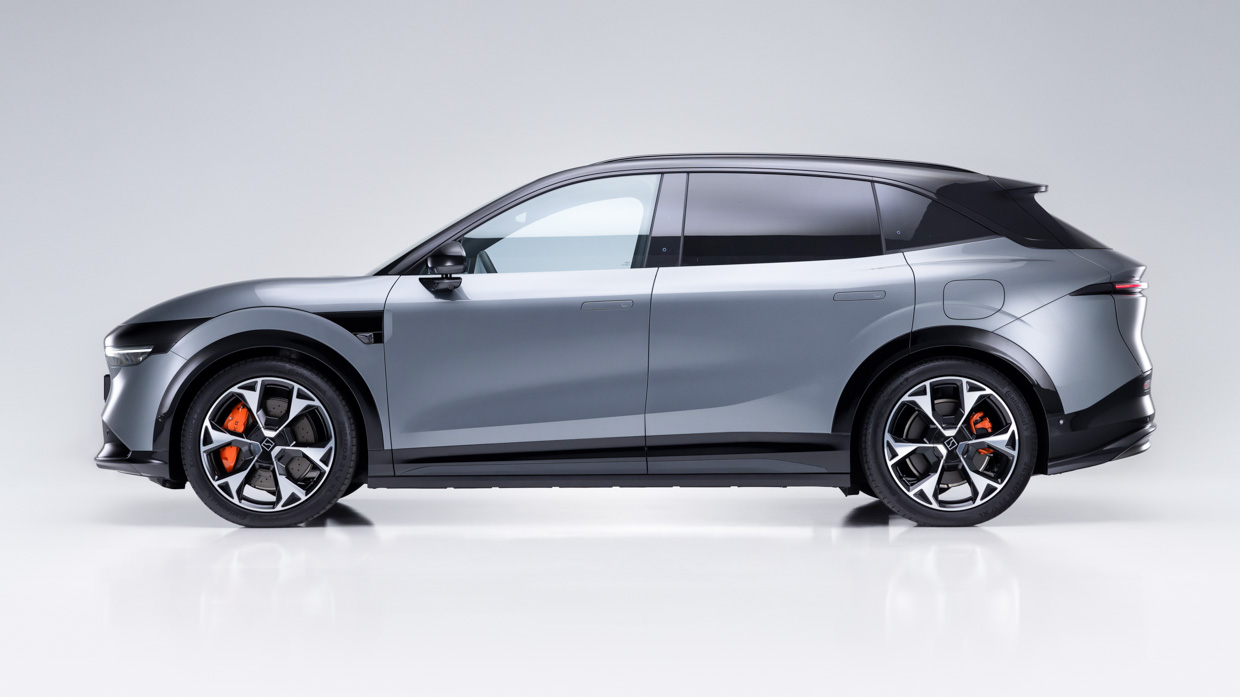
Charging times are outstanding for the Zeekr 7X thanks to a 360kW DC peak charge speed. Australian charging infrastructure generally doesn’t stretch to 360kW, but find a compatible charger and 10-80 percent can be recouped in as little as 13 minutes.
AC charging can be completed at up to 22kW, to suit three-phase home or work setups.
Warranty and service pricing are not yet known for Australia; no spare tyre is included, as is the case with most other electric cars.
Our first impression of the Zeekr 7X was positive, though we have our reservations.
This is a refined, quiet, well-equipped electric SUV that can support being priced a little above the familiar Tesla Model Y.
There is no doubt that the Zeekr is more plush and luxurious than the aforementioned Tesla, the BYD Sealion 7, Volkswagen ID.4 and other mainstream electric SUVs.
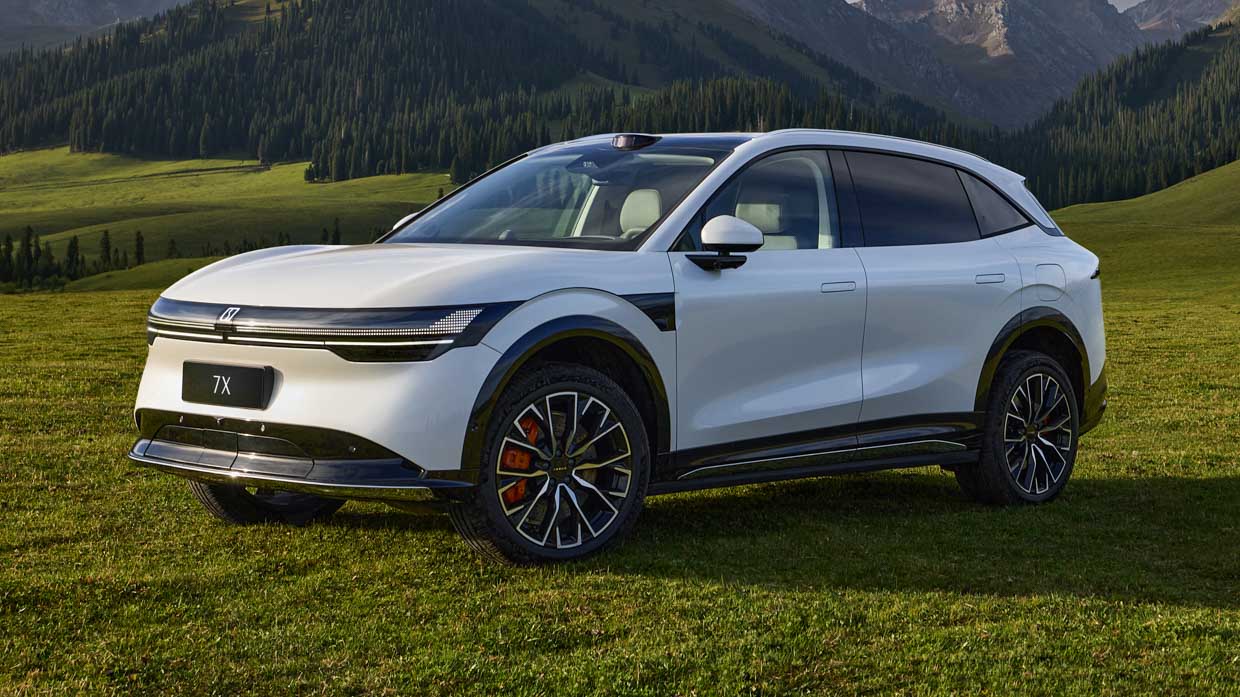
Its dynamic character is generally smooth and confident, though we would support Zeekr conducting an Australian suspension retune as control over bumps doesn’t yet feel sufficient.
Longer-term, it is clear the wider Geely group needs to concentrate on getting burgeoning vehicle mass under control – as this factor blunts efficiency, range, handling, ride and performance.
However, if priced correctly and supported by a growing retail and service network, the Zeekr 7X could become an interesting new option for buyers seeking a plush experience and value in an electric SUV.
About Chasing cars
Chasing Cars reviews are 100% independent.
Because we are powered by Budget Direct Insurance, we don’t receive advertising or sales revenue from car manufacturers.
We’re truly independent – giving you Australia’s best car reviews.
The estimate provided does not take into account your personal circumstances but is intended to give a general indication of the cost of insurance, in order to obtain a complete quote, please visit www.budgetdirect.com.au. Estimate includes 15%^ online discount.
^Conditions Apply
Budget Direct Insurance arranged by Auto & General Services Pty Ltd ACN 003 617 909(AGS) AFSL 241 411, for and on behalf of the insurer, Auto & General Insurance Company Limited(ABN 42 111 586 353, AFSL 285 571).Because we don’t know your financial needs, we can’t advise you if this insurance will suit you. You should consider your needs and the Product Disclosure Statement before making a decision to buy insurance. Terms and conditions apply.
Indicative quote based on assumptions including postcode , 40 year old male with no offences, licence suspensions or claims in the last 5 years, a NCD Rating 1 and no younger drivers listed. White car, driven up to 10,000kms a year, unfinanced, with no modifications, factory options and/or non-standard accessories, private use only and garaged at night.
^Online Discounts Terms & Conditions
1. Discounts apply to the premium paid for a new Budget Direct Gold Comprehensive Car Insurance, Third Party Property Only or Third Party Property, Fire & Theft Insurance policy initiated online on or after 29 March 2017. Discounts do not apply to optional Roadside Assistance.
2. Discounts do not apply to any renewal offer of insurance.
3. Discounts only apply to the insurance portion of the premium. Discounts are applied before government charges, taxes, levies and fees, including instalment processing fees (as applicable). The full extent of discounts may therefore be impacted.
4. We reserve the right to change the offer without notice.